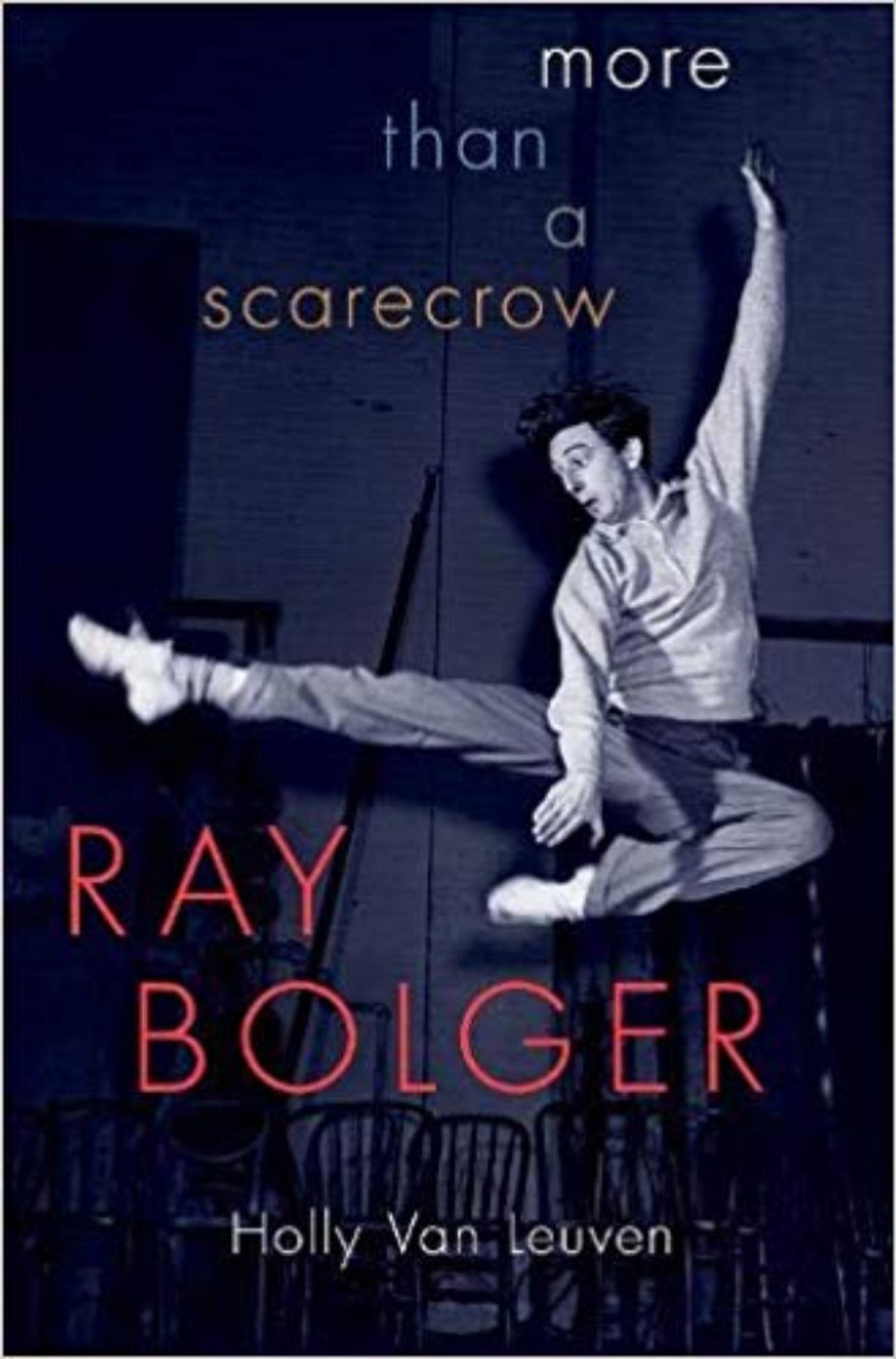Review: RAY BOLGER: MORE THAN A SCARECROW by Holly Van Leuven

From childhood, most of us were familiar with the lithe, loose-limbed scarecrow from that most famous of Technicolor movie musicals: The Wizard of Oz. And while the movie and its characters, cleverly crafted by L. Frank Baum from his original novel, gave us the iconic, indomitable Judy Garland, little else remains known of her fellow costars, in particular her lifelong friend who played The Scarecrow who only wanted a brain, Ray Bolger. Thus, it was such a welcome and long overdue surprise to hear news that the first ever biography of Bolger was released this past March, Ray Bolger: More Than A Scarecrow by Holly Van Leuven, from Oxford University Press.
While readers will, of course, eagerly await tales from Bolger's time on the set of The Wizard of Oz, it is what Van Leuven so expertly brings to the page about Bolger's personal life and time as a veteran stage performer that make this book a must read for musical theatre historians and Oz fans alike. Having been given special access by UCLA and the Bolger estate, she vividly brings to life the real man behind the scarecrow mask to reveal an ardent showman and theatrical animal. Like many movie musical actors of the 1930's, Bolger cut his teeth on the vaudeville stage in such landmark musicals as The Ziegfeld Follies and the George White Scandals. It's no wonder that his costars in Oz (Judy Garland, Bert Lahr, and Jack Haney; "Dorothy," "The Lion," and "The Tinman" respectively) were all also vaudeville vets. The evidence of this is seen by their onscreen chemistry and cohesion. But unlike many stars of his day that floated effortlessly from stage to screen, Bolger's unique, lanky looks unintentionally afforded him more time to train and hone his skills as a physical comedian turned dancing musical comedy leading man. Van Leuven painstakingly pours over volumes of letters (in Bolger's own hand) and never-before-seen photographs from the UCLA Library and various other sources, to paint the picture of the real Ray Bolger.
It should be noted that Van Leuven's greatest strengths as a premiere biographer are in providing us with an eclectic, sweeping scope of Bolger's life outside of the few, stressful months of filming the lauded The Wizard of Oz for MGM. Most fascinating is the summarized correspondence letters between Bolger and his loving wife and sole true love, Gwen Rickard, who also served as his sometimes manager and constant emotional comfort and support. Great attention is paid in spotlighting their unwavering infatuation and love for one another, whether recalling Gwen's efforts in securing a movie or TV deal for her husband or stepping in during Bolger's earlier stage appearances in vaudeville and subsequently Broadway to demand her husband pry himself from an adoring nation to procure him rest. Van Leuven occasionally includes intimate snippets of love letters between the couple to accentuate their affections.
What is most noteworthy is the ease and ability Van Leuven possesses to guide us into the true soul of Bolger. Yes he was an unflappable, indefatigable showman of the highest pedigree. While never quite cementing himself as a bona fide cinematic leading man, there was much more to Bolger than just the innocently lovable song-and-dance man. There was an honest entertainer in every sense of the word. Whether it was spending months away from home and from the love of his life to help start the USO program overseas to boost troop morale during WWII or lending his staunch, conservative Bostonian Irish Catholic beliefs to support the Republican campaign for Nixon in sleepy, Midwestern towns, Bolger was the consummate professional.
Reader Reviews
Videos

